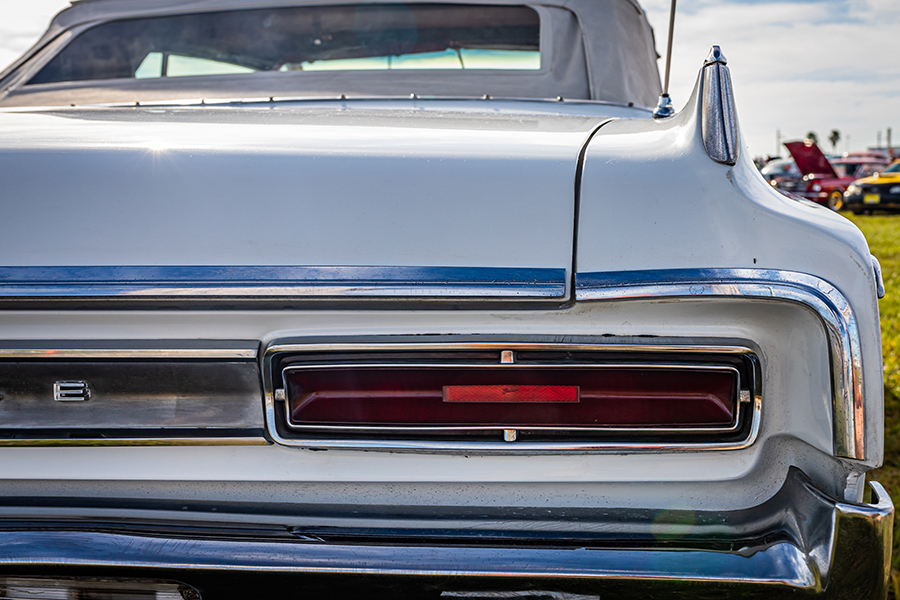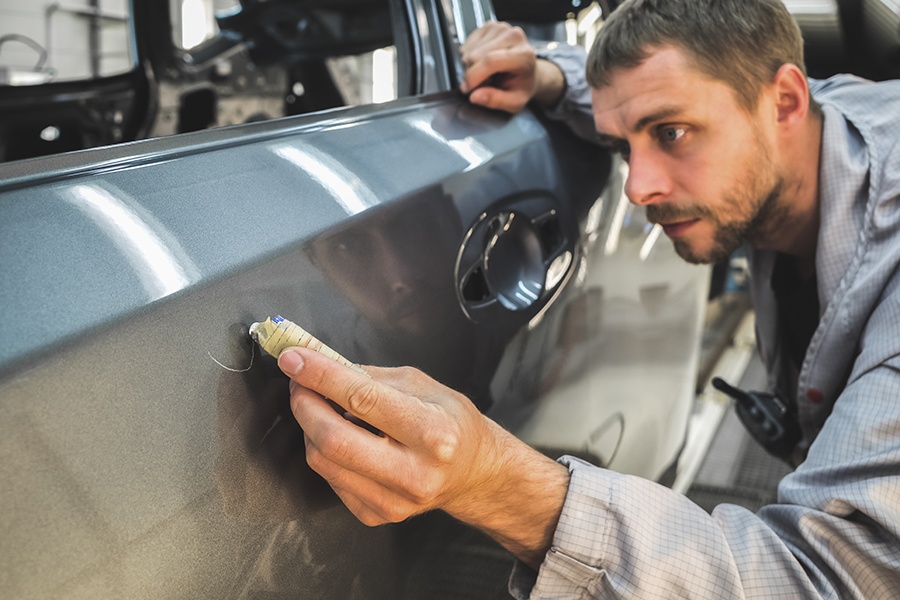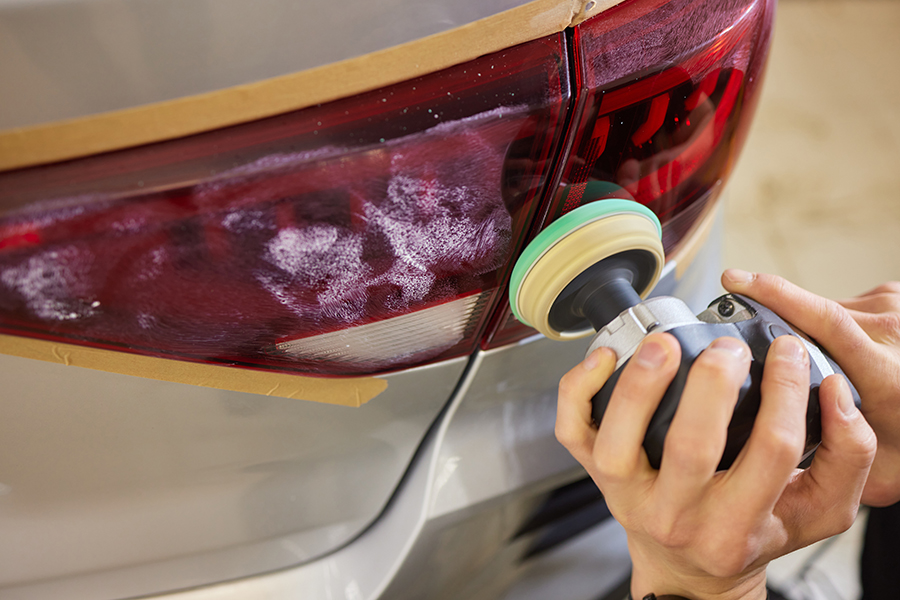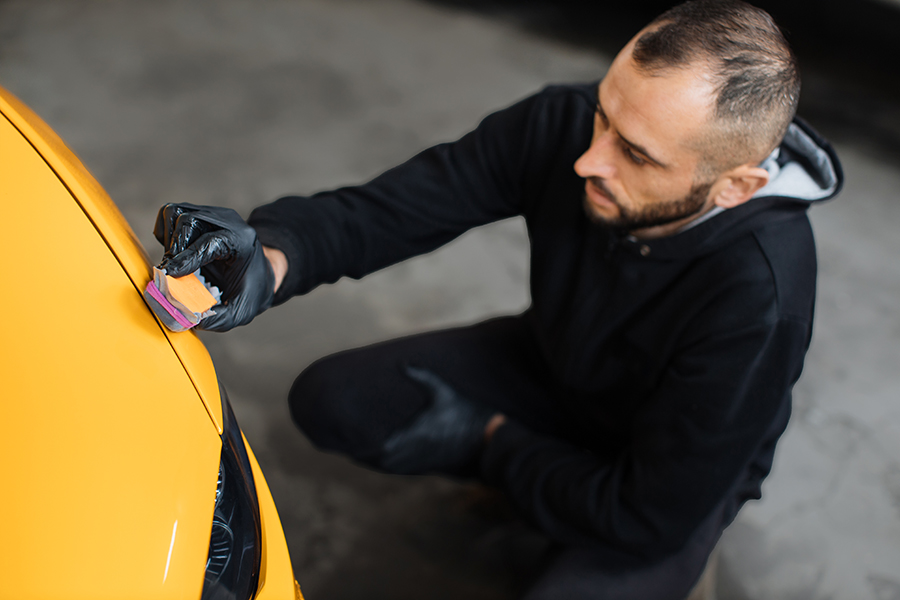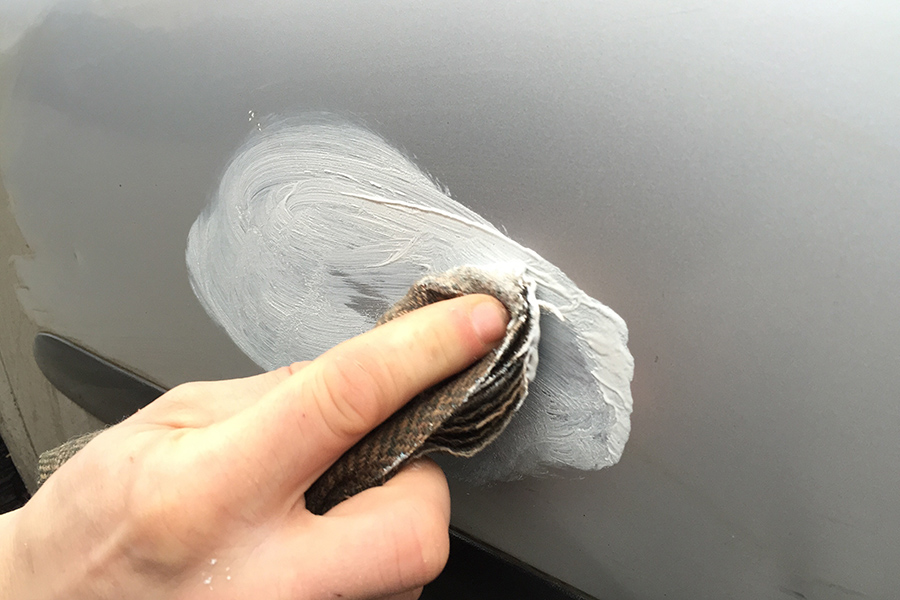Ever bumped your car and found yourself staring at a dent in the fender? You're not alone. Since cars hit the road, dents have been an annoying part of vehicle ownership. But, with advancements in auto repair, fixing a fender dent has become easier and more accessible than ever. This post dives into the world of fender dent repair, offering insights on how to get your car looking its best without breaking the bank. Whether it's a minor ding or a major dent, understanding your options can save you time and money, ensuring your ride stays in top-notch condition. Let's explore how to tackle these pesky problems head-on, keeping your vehicle's appearance flawless.
Key Takeaways
- Fender dent repair can restore your car's appearance and prevent further damage. It's a process worth understanding whether you're a car enthusiast or just want to maintain your vehicle's value.
- There are several methods for fender dent repair, including paintless dent repair, which is effective for small dents and does not require repainting.
- Assessing the damage accurately is crucial for choosing the right repair method. Consider factors like the dent's size, depth, and location on the fender.
- DIY fender dent repair can be cost-effective for minor dents, but professional repair is recommended for larger or more complex damage to ensure quality and durability.
- Preventing future dents involves cautious driving, regular maintenance, and using protective accessories like bumper guards or parking away from other vehicles when possible.
What is Fender Dent Repair
Definition and Importance
A fender dent is a depression in the car's fender, which is the frame around the wheel. Fixing these dents is crucial. It keeps the car looking good. Dents can lower a car's value. They make it look old and not cared for. Fixing them helps keep the car's appearance and value.
Common Causes of Fender Dents
Many things can cause fender dents. Minor collisions are a big reason. Cars bump into each other or hit things. Hail can also cause dents. It falls from the sky and hits cars hard. Parking lot mishaps happen too. Cars get too close or people open doors into other cars.
- Minor collisions
- Environmental factors like hail
- Parking lot mishaps
Benefits of Timely Repair
Fixing dents fast is smart. It stops rust and corrosion. This keeps the car strong and safe. The car's value stays high when it looks new. A nice-looking car makes us feel good too.
By fixing dents right away, you:
- Stop rust and corrosion
- Keep the car's value high
- Make it look better
Types of Fender Dent Repair
Paintless Dent Repair (PDR)
Paintless Dent Repair, or PDR, is a gentle way to fix dents. It does not hurt your car's paint. Technicians use special tools to push the dent out from behind. They are very careful not to scratch or harm the car.
This method is good for your wallet too. It costs less because it does not need new paint or fillers. Many people choose PDR because it keeps their car looking original.
Traditional Dent Repair
In traditional dent repair, technicians do more work. First, they may need to take off the paint around the dent. Then they use a filler to make the surface smooth again. After that, they paint the repaired spot to match the car's color.
This process takes more time than PDR. It might take days to finish. The use of fillers and paint means it can cost more too. But, this method can fix bigger dents that PDR cannot.
DIY Dent Repair Methods
e people try to fix dents themselves. They might use a plunger or hot water and a hairdryer. These methods can work for small dents.
- Using a plunger works like PDR but is less precise.
- Hot water makes the metal soft, and a hairdryer helps pop the dent out.
These DIY fixes are cheap but can be risky. If done wrong, they could damage the paint or make the dent worse.
Assessing the Damage
Identifying Dent Severity
To figure out how bad a dent is, you need to look at how deep and big it is. A small dent might not seem like much, but if it's deep, it could be a problem. The place where the dent is can also make a big difference. A dent on the edge of a fender is not like one in the middle.
The spot of the dent matters a lot. If it's in a tricky spot, fixing it might be harder. This could also mean the car's structure got hurt. It's important to check this early.
Choosing the Right Repair Method
After figuring out how bad the dent is, you have to pick how to fix it. Paintless Dent Removal (PDR) and traditional methods are two main ways. PDR works best for small dents where the paint isn't broken. It's cheaper and faster than traditional methods.
But, if the dent is big or has hurt the car's body, you might need a more serious fix. This could mean using body filler or even replacing parts of the car. The choice depends on how bad the dent is, and also on how much money and time you want to spend.
Cost Estimation
How much fixing a dent costs can vary a lot. Small dents fixed with PDR might cost between $50 to $125. Bigger fixes can cost from hundreds to thousands of dollars. The price changes based on how bad the dent is, where it is, and what method you use to fix it.
Other things that change the cost include the type of car and where you get it fixed. Some cars are just more expensive to work on. And, if your insurance covers it, that can help with the cost too. But remember, making a claim might raise your rates later.
Paintless Dent Repair Process
Tools and Equipment Used
Professionals use specific tools for paintless dent repair (PDR). Dent pullers are common. They help pull the dent out without harming the car's paint. Specialized PDR tools also play a big role. These include rods and picks designed to push dents out from behind.
Safety equipment is important, too. Technicians wear gloves and goggles. This keeps them safe while they work.
Step-by-Step Procedure
After assessing the damage, the next step is preparation. The area around the dent gets cleaned. This ensures no dirt interferes with the repair.
The actual repair steps are detailed but straightforward. First, technicians gain access to the backside of the dent. They might need to remove panels or trim. Then, using PDR tools, they carefully push the dent back into place. From the outside, they may use a dent puller to fine-tune the repair.
Advantages of PDR
PDR has many benefits over traditional methods. One major advantage is quicker repair times. Most PDR jobs take just a few hours. Compare this to traditional repairs that can take days.
There's also no need for repainting. This preserves your car's original paint job. It saves time and money.
Lastly, PDR is better for the environment. It uses fewer materials since there's no need for new paint or fillers.
Front Fender Dent Repair
Common Front Fender Issues
Front fenders often face alignment problems. They don't fit right after a hit. Common impact points are near the headlights and wheels. Cars often get hit here.
Frequent causes of damage include small crashes and hitting objects like poles. Parking lots are danger zones for fenders. People sometimes bump into other cars or objects. This hurts the fender.
Step-by-Step Repair Guide
First, gather your tools. You need a dent puller, sandpaper, and paint. Make sure you have safety gear too. Gloves and goggles are important.
- Clean the area around the dent.
- Use the dent puller to fix the shape. Pull gently to avoid more damage.
- Sand the area smooth.
- Apply primer and let it dry.
- Paint the fender to match your car.
Always work in a well-ventilated area. Keep flammable items away from your work spot.
When to Seek Professional Help
e signs need expert attention. If the paint cracked, it's time for a pro. Deep dents are hard to fix at home too.
Complex damage scenarios include damage to internal parts. The fender might look okay, but things inside could be hurt. This needs a professional look.
Warranty and insurance often cover big repairs. Check your policy before starting any work.
Quarter Panel Dent Repair
Identifying Quarter Panel Damage
Quarter panels are important parts of a car's body. They wrap around the sides and back. This part can get damaged in accidents or by hitting objects.
Signs of damage include scratches, dents, and rust. These signs are easy to spot. Damage can make cars less safe. It weakens the structure. This is bad in an accident.
Repair Techniques
Fixing quarter panel damage involves several steps. Technicians might use welding to fix holes. Patching is another method. It covers bigger damaged areas.
Body filler helps smooth out dents. It makes the surface even. Then, the area needs painting. Blending paint is important. It makes sure the new paint matches the old one.
Cost Considerations
Many things affect repair costs. The damage size is a big factor. So is the repair method chosen.
DIY repairs might seem cheaper than professional ones. But, they can be risky. Mistakes can lead to more costs later on.
Hidden costs can surprise car owners. Extra damage found during repairs can raise the price.
DIY vs Professional Repair
Pros and Cons of DIY
Fixing a fender dent on your own can save money. You don't pay for labor. But, it's not all good news. Doing it yourself has risks. If you do it wrong, the dent might look worse. Or, you could harm your car's paint.
You need special tools to fix dents right. These tools cost money. Sometimes, they're hard to find or use without training. So, think about this before starting.
Benefits of Professional Services
Going to a pro means getting top-notch repairs. They know how to make your car look new again. Plus, many shops give warranties. If something goes wrong later, they'll fix it for free.
Pros have tools that most people don't. These tools get the job done fast and right. Their experience means they can handle tricky dents, like those near the quarter panel we talked about before.
How to Choose a Repair Shop
Picking the right shop is key. Look for one with certified techs. They have the training to fix your car well.
Always check reviews online. What other customers say matters. It shows if the shop does good work and treats people right.
Lastly, compare what different shops offer and at what price. Don't just look at the cost though. Consider the quality of their work and if they guarantee it.
Preventing Future Dents
Protective Measures
Using car covers can shield your vehicle from minor bumps and weather damage. It's a simple step that makes a big difference. Car covers act like a protective blanket. They keep the paint safe.
Parking in safe areas is also key. Look for spots away from heavy traffic or construction sites. These places have less risk of flying debris or careless drivers. Safe parking spots are often underutilized gems.
Regular inspections help catch issues early. Checking your car for any signs of wear or potential damage spots can prevent bigger problems. It's about being proactive. Small actions can save you from future headaches.
Safe Driving Tips
Maintaining a safe distance from other vehicles is crucial. It gives you time to react if something unexpected happens. This space acts as a buffer zone, protecting your car from sudden stops or debris.
Cautious parking involves more than just finding a spot. Consider the area around it. Park away from carts in shopping centers and away from tight spots where doors could easily hit your car.
Being aware of your surroundings helps avoid dents. This means watching for potholes, debris, and other hazards on the road. Awareness is your first line of defense against unexpected damage.
Regular Vehicle Maintenance
Routine checks are vital for keeping your car in top shape. They let you spot potential issues before they turn into big problems. Regular maintenance keeps your vehicle running smoothly and looking its best.
Washing and waxing play a big part in this process. They protect the paint and body from rust and decay. A clean car is not just about looks; it's about longevity.
Timely repairs and inspections ensure your car stays in good condition. If you notice something off, don't wait. Fixing small issues promptly can prevent larger, more expensive repairs down the road.
Summary
Fender dent repair might seem like a tough nut to crack, but with the right info, you've got this. Whether it’s a tiny ding or a big bash, understanding the types of repairs and how to assess damage means you're halfway there. Dive into DIY if you're feeling brave, or let the pros handle it for a flawless finish. And hey, don't forget about dodging those future dents with a few smart moves.
Now that you're clued up, why sit on it? It's time to roll up your sleeves and get that fender looking sharp again. Or better yet, snag a pro who can do the heavy lifting. Your ride deserves to look its best, and you deserve a car that makes you proud every time you hit the road. Let's make those dents history and keep your wheels turning heads!
Frequently Asked Questions
What exactly is fender dent repair?
Fender dent repair is like giving your car a facelift after it's had a bit of a rough day. It's all about fixing those unsightly dents on your car’s fenders to make them look as good as new.
Can I fix a fender dent myself, or should I go to a pro?
It's like deciding between DIY crafts and calling in an expert. For small dings, you might manage with some DIY techniques. But for the big, complex ones, it’s smarter to hand it over to the professionals.
What are the different types of fender dent repair?
Think of it as ordering coffee—there's more than one way to get your fix. From paintless dent repair, which is like a gentle nudge back into place, to more intensive methods that involve filling and painting, there's a variety to suit every kind of fender mishap.
How do technicians assess the damage before repairing a dent?
Assessing damage is like being a detective; technicians inspect the dent's size, depth, and location, along with any paint damage. This helps them decide the best course of action to make your car’s fender look flawless again.
What is paintless dent repair and how does it work?
Paintless Dent Repair (PDR) is like magic for minor dents. Technicians use special tools to gently push the dented metal back into its original shape without needing to repaint. It’s quick, cost-effective, and keeps your car’s original finish intact.
Are there any tips for preventing future dents on my car's fender?
Preventing future dents is like protecting your smartphone screen—a good case (or cautious parking) helps a lot. Try to park away from other cars when possible and be mindful of potential hazards like shopping carts and hail.
